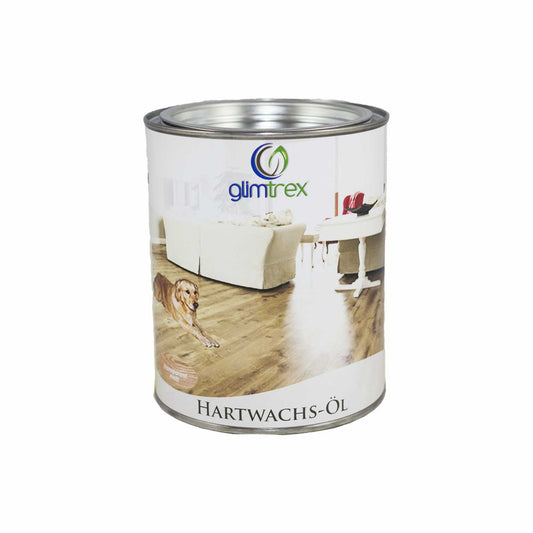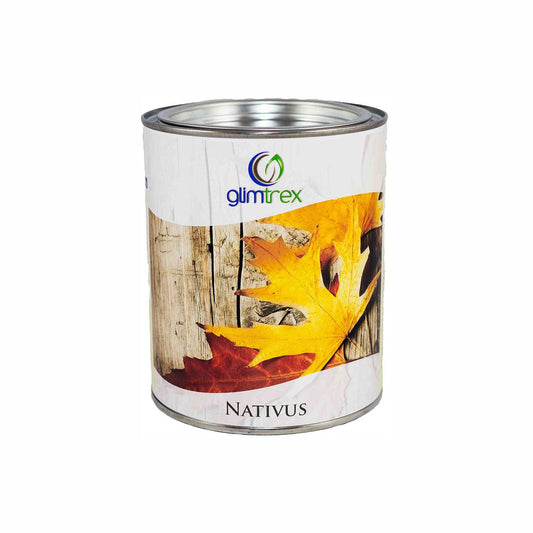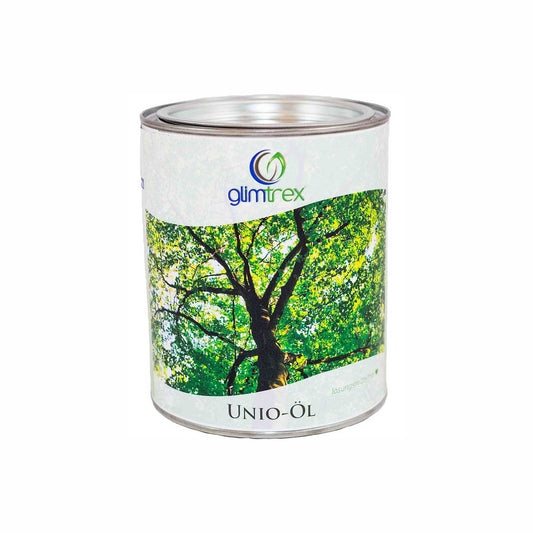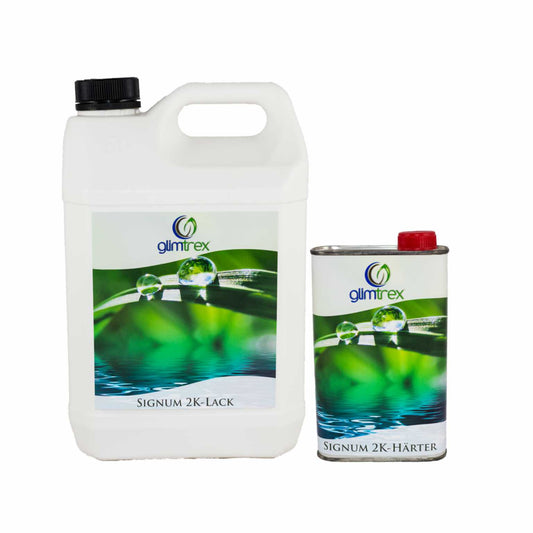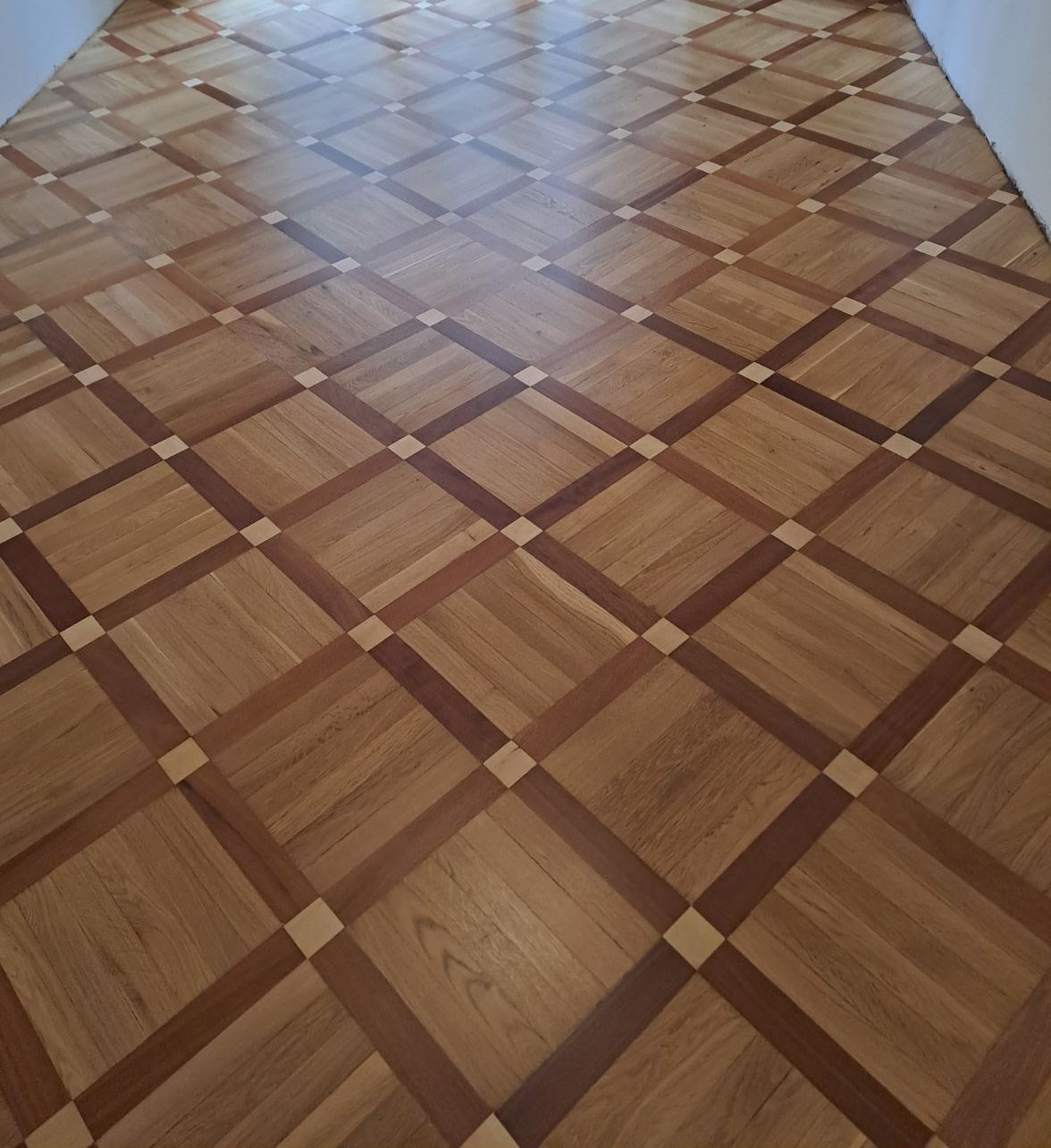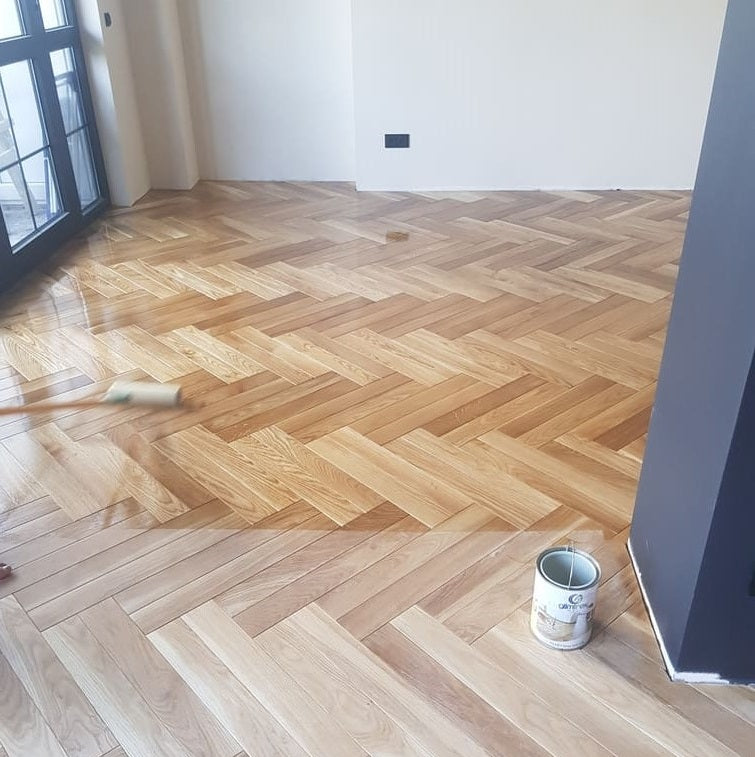
Oiling parquet
Share
Parquet floors represent a high-quality category of floor coverings that are characterized by durability and timeless aesthetics.
However, like all wooden elements, parquet floors require regular maintenance to maintain their quality and appearance over time. Oiling parquet floors is a particularly effective method in this context.
In contrast to sealing processes, which form a superficial protective layer, oiling enables deep impregnation of the wood while preserving its natural diffusion properties.
|
How do you oil parquet properly? |
Professional versus independent oiling of the parquet
The decision between professional services and self-service should be made taking several factors into account:
Advantages of professional implementation :
- Expertise and experience
- Access to special tools and high-quality products
- Efficiency in execution
- Potentially better long-term results
Advantages of self-help :
- Significant cost reduction
- Time flexibility
- Complete control over the process
- Acquisition of practical skills
The decision should take into account the size of the area, the condition of the parquet and your own craftsmanship skills.
Wood species-specific characteristics
Different types of wood require differentiated treatment approaches:
- Oak : Robust wood with good oil absorption, suitable for most types of oil
- Beech : Sensitive to moisture with a tendency to change dimensions, requires special care in the selection of oil
- Walnut : Dark wood species whose natural color depth can be accentuated by suitable oil products
- Exotic woods : Often with a high oil content, which can impair absorption capacity; preliminary tests on inconspicuous areas are recommended
The compatibility between the wood species and the oil product should always be checked in advance to avoid undesirable reactions.
Typical sources of error and their prevention
Several potential errors can affect the results of the oil treatment:
- Overdose : Too rich an application leads to insufficient absorption and results in sticky surfaces.
- Inhomogeneous application : Uneven application causes visual irregularities in the appearance.
- Insufficient drying time : Premature use before full curing may result in permanent damage.
Careful observation of the manufacturer-specific processing guidelines and compliance with the recommended process parameters are crucial for an optimal result.
Hard wash oil silk matt on beech parquet 
|
Professional care of oiled parquet floors
Continuous care of oiled parquet floors is essential for their long-term preservation:
- Daily care : Regular removal of dust and dirt particles by sweeping or vacuuming with accessories suitable for parquet floors
- Periodic cleaning : Weekly wet cleaning with minimally wetted mop using pH-neutral cleaning agents designed for oiled wooden floors
- Refresher treatment : Depending on the intensity of use, periodic application of care oil to regenerate the protective effect, typically at intervals of 1-3 years
- Product selection : Exclusive use of compatible care products designed for oiled wooden floors
Frequently asked questions about parquet oil treatment
Is it possible to apply oil to sealed parquet?
Direct oil application to sealed surfaces is not possible because the existing sealant prevents the oil from penetrating. Converting from sealed to oiled parquet requires completely sanding the sealant down to the bare wood.
How long does oiled parquet flooring last?
With proper care, oiled parquet floors offer considerable longevity. The need for refinishing varies depending on the intensity of use: In high-traffic areas, a refresher may be necessary after just 1-2 years, while in less-used rooms, intervals of 3-5 years are realistic.
Which oil products meet ecological criteria?
Natural oils based on plant-based raw materials such as linseed oil, soybean oil, or tung oil generally have a favorable ecological profile. These products are characterized by reduced volatile organic compound (VOC) content and biodegradability. Certifications such as the EU Ecolabel or natureplus can be helpful in identifying environmentally friendly products.


